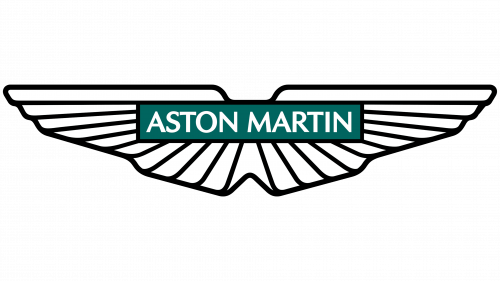Recently, a wave of logo rebranding has swept the automotive industry. Many well-known manufacturers are gravitating towards the prevailing trend of flat design. This movement reflects a shift to a modern aesthetic and is a strategic response to the demands of the digital age.
Historically, when automobile logos adorned primarily the front of vehicles as emblems, complex 3D designs with bevels, shadows, and elaborate details were acceptable and admired. Such ornate logos symbolized luxury, precision, and attention to detail. However, with the advent of the digital revolution, logos are no longer limited to the hood. They are making their way into mobile apps, in-car multimedia systems, and other digital platforms. Therefore, there is an increasing focus on making these emblems versatile and easily recognizable, even in a scaled-down form.
However, the rebranding journey is not without its challenges. The public’s perception of the redesigned logos varies greatly. Some rebrandings successfully combine the preservation of brand heritage with the use of modern design principles. Others, on the other hand, can be overly simplistic, losing the essence of the brand or visually unappealing.
For those interested in automotive branding, a closer look at modern car logos reveals a rich tapestry of design evolution. It provides insight into which designs resonate with audiences and which ones miss the mark. A collection of exemplary logos on modern automobiles can be a guide for design enthusiasts.
Creating a logo is a complex dance of art and strategy. Understanding the nuances of design can be crucial for aspiring designers or brands thinking about an update. Various resources shed light on the pros and cons of logo design to help navigate the creative process.
The trend of logo redesign in the automotive industry highlights the broader theme of branding adaptability. As the digital world evolves, brands need to reflect a modern aesthetic while providing versatility. This balance is critical to keeping brands relevant and appealing in a rapidly changing world.
Successful: Peter Saville’s Aston Martin logo
In a world often dominated by grand gestures, Aston Martin has demonstrated the power of restraint in its rebranding. This company’s updated logo is a testament to the fact that small, calculated changes can yield significant results. Rather than resorting to a major overhaul, Aston Martin has embraced the “less is more” philosophy.
Peter Saville, known for his iconic designs in the world of music, was the creative mastermind behind the logo transformation. His ability to combine modern design trends with timeless brand elements was crucial. Savill realized that the essence of Aston Martin was not in its extravagant design but in its understated elegance.
The changes Saville made, although seemingly minimal, were of strategic importance. The move from a gradient to a solid racing green background echoed simplicity and elegance, two attributes closely associated with Aston Martin. The abandonment of the semicircular line on the fenders simplified the logo, making it more adaptable to different platforms and visually cleaner.
While some rebrandings aim for shock or radical transformation, Aston Martin’s approach emphasizes the potential for nuanced change. Such changes may go unnoticed by the general public, but for design aficionados and brand loyalists, they can make a huge difference. They subtly reinforce the brand’s desire to evolve while honoring its rich past.
The transformation of the Aston Martin logo serves as a masterclass in brand evolution. It emphasizes the importance of understanding the brand’s core values and translating them into design.
Nice: Citroen’s retro-modern logo
The recent rebranding of the Citroen logo is an exploration of the paradoxes of design. How can something be perceived as modern and classic at the same time? The French automaker’s new logo elegantly solves this problem, demonstrating the synergy between the brand’s storied past and its promising future.
The rebranding began with a deep dive into the archives. Citroen turned to its seminal 1919 visual style, proving that sometimes, to move forward, you must first look backward. It was as much about nostalgia as it was about understanding the essence of the brand and translating it into a modern context.
The transformation brought back the oval-oriented design. However, it was not a simple repetition of the past. It integrated modern elements such as an updated color palette and a flatter aesthetic, making the logo more adaptable to today’s digital platforms and diverse branding requirements.
While many brands choose complexity to convey sophistication, Citroen’s approach is quite different. The automaker sought clarity and minimalism to ensure that the emblem would resonate with longtime fans of the brand familiar with its heritage. The updated logo strikes a delicate balance between being easily recognizable and adaptable.
The rebranding of the Citroen logo provides invaluable branding lessons. It emphasizes the importance of understanding a brand’s history while adapting to the demands of the modern world.
Good: the transparent BMW logo
BMW, a company synonymous with automotive excellence, has already gone down the path of simplifying the emblem at first. In March 2020, as automakers around the world switched brands, BMW unveiled a new emblem, positioning itself as one of the first adopters of modern design trends.
The transformation marked a departure from the traditional metallic color of the emblem. Transparency and flatness are at the center of the new design concept. The iconic black outer ring, which has been an integral part of the emblem for decades, has undergone a dramatic change, becoming transparent.
3D effects, which are known to add depth and dimension, are absent from the updated logo. Instead, BMW opted for a minimalist design that allows for easier adaptation to different platforms, especially digital ones.
While the design is undeniably modern, it doesn’t completely sever ties with the past. The emblem is still in white and blue colors, a testament to the company’s Bavarian roots. These colors are not just a design choice; they reflect the heritage and history of the brand.
Any change, especially a change as iconic as the logo, should elicit different reactions. When the logo was unveiled, it generated a lot of skepticism. However, time has shown its versatility. Whether it’s the gleaming hood of a car or the interface of an app, the updated logo has not lost its relevance, reinforcing BMW’s reputation as a brand that combines tradition and innovation.
The redesign of the BMW logo clearly demonstrates the importance of adapting to changing design trends. While embracing modern trends, the automobile giant has not left its rich heritage untouched.
Bad: the new Kia logo
The unveiling of the new Kia logo drew strong reactions from many quarters. It was significantly different from its predecessor, which sparked a lively debate in design and automotive circles.
The previous Kia emblem had its caveats. According to some, its main virtue was that it wasn’t overly attractive, but it was unmistakably recognizable. It was simple, easily recognizable, and did not ambiguously convey the brand’s name.
Kia’s strategy for introducing the updated emblem was spectacular – the brand aimed for a memorable and impressive debut, utilizing the visual appeal of fireworks and drones. The extravaganza surrounding the presentation is a testament to the importance the brand places on this update.
The new logo is undoubtedly modern, with a more elegant design that radiates dynamism. The sawtooth wave pattern stands out in particular, giving the emblem a sense of movement and vitality. However, there was a price to pay for the modern style – understanding.
An unintended consequence of the redesign was the confusion of potential consumers and enthusiasts. The radicality of the design, while appealing, may have compromised the clarity of the brand name. This is evidenced by a spike in the number of online inquiries for “KN” cars, suggesting possible brand recognition issues after the emblem’s introduction.
Kia’s bold move to redesign its emblem shows the delicate balance that must be found between modernity and brand recognition.
Failed: Audi’s ‘cheap’ logo redesign
Audi’s emblem has long been known for its minimalism. The intersecting four rings, easily recognizable and replicable, served as a testament to the brand’s commitment to a simple but effective design aesthetic.
With the gravitation toward flat design, Audi also decided to revisit its iconic logo. Doing away with the beveled and shiny shape, the company introduced a design described as more “understated, clean and transparent.”
While the changes seem minimal, with the four rings retaining much of the same geometric shape, subtle nuances distinguish the old logo from the new.
The appearance of the new logo has caused mixed reactions in the automotive community. Some users on digital platforms, such as Audi’s Reddit page, expressed their displeasure. The opinion was that, despite the desire for modernity, the new design looked somewhat unconvincing. Comments ranged from “cheap” to the impression that the design was “slapped on” hastily.
An intriguing aspect of the reviews was the emphasis on tactile feel. Many recalled how the old badge felt to the touch, which added luxury and depth to the corporate identity, making it different from a mere visual symbol.
Audi’s decision to optimize its emblem illustrates the challenges established brands face when attempting to modernize. The Audi example emphasizes the importance of visual appeal and consumers’ physical and tactile connection to brand symbols.








